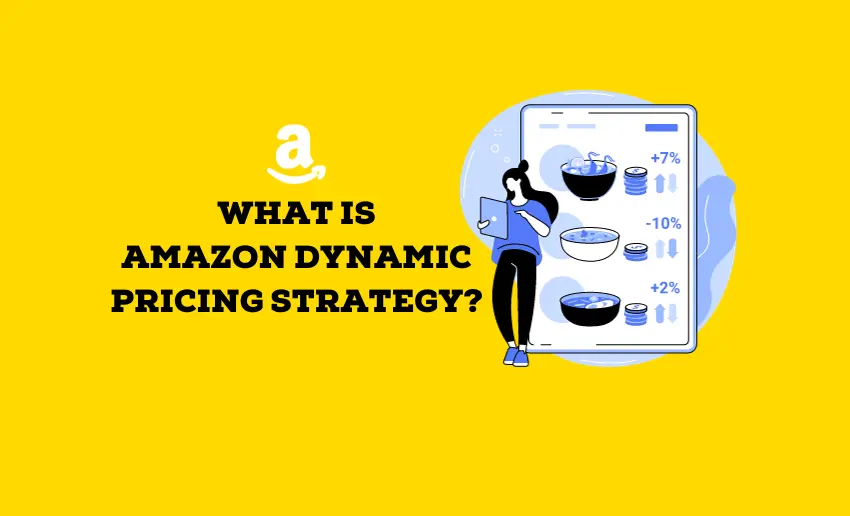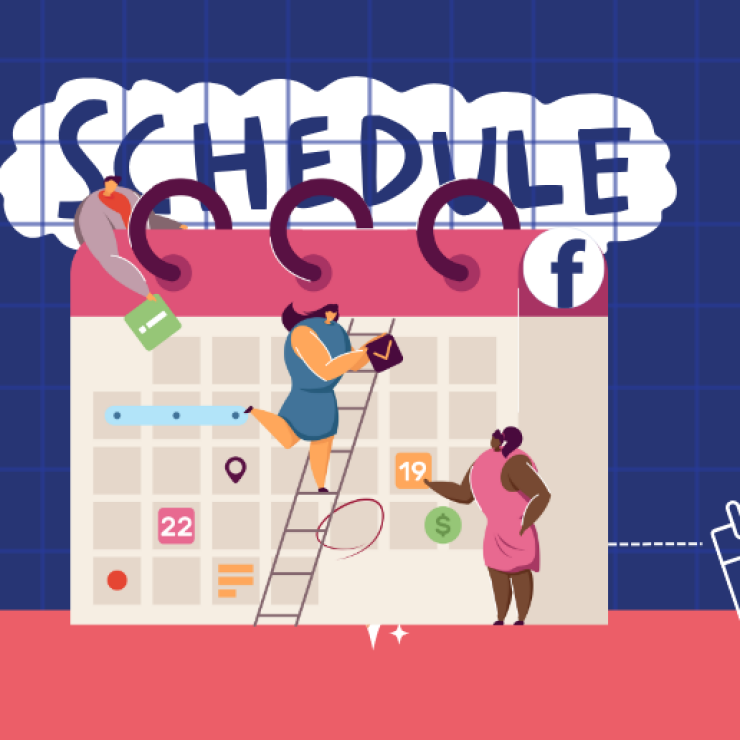Amazon climbed to the top using innovative methods and fancy technology. They kept prices low, cared a lot about customers, and expanded all over. Selling on Amazon is great, but setting prices can be tricky. As many retailers found out, cutting prices alone might not help.
To help sellers maintain profitability, Amazon took a different path while also retaining its focus on customers. They did this by using a special pricing model called the Amazon dynamic pricing model. But what’s that, you ask? And how does it affect buyers and sellers? This blog post looks at Amazon’s dynamic pricing: what it is, why it matters, and how it affects everyone on the site.
What is Amazon’s dynamic pricing strategy?
Dynamic pricing on Amazon is a strategy used to adjust the prices of products in real time based on various factors. Instead of having a fixed price, dynamic pricing allows for flexibility, meaning prices can change frequently, even within short periods.
Dynamic pricing aims to maximize profits, stay competitive, and meet demand by setting prices that align with market conditions, customer behavior, and other influencing factors. This strategy enables retailers to optimize revenue by adjusting prices based on supply, demand, competitor pricing, seasonality, and even individual customer preferences.
Factors influencing Amazon’s dynamic pricing strategy
While sellers have the freedom to set their prices on Amazon, the platform keeps a close watch on prices. Amazon does this to ensure that prices follow a fair pricing policy to ensure customers trust the e-commerce giant.
Simultaneously, dynamic pricing also helps sellers to maintain profitability in the face of strong competition and other factors. That said, here are some factors that influence dynamic pricing on Amazon:
1. Real-time data analysis
Amazon’s algorithm keeps a close eye on what’s happening right now. It gathers and studies information instantly. This data helps Amazon make quick decisions about prices. When a product is highly sought after, Amazon uses the live data to set prices smartly and stay ahead.
2. Competitor pricing
Amazon’s dynamic pricing doesn’t just think about its prices. It also checks out what other sellers are doing. If another shop owner lowers the price of a product, Amazon might do the same. It’s like a game of keeping up. This way, customers can get the best deal without Amazon losing its competitive edge.
3. Customer behavior and demand
Ever notice how the price of something might change if many people want it? That’s because Amazon watches how much people want different things. If something is super popular, the price might go up. But if fewer people want it, the price might drop. They change prices based on what customers are into.
4. Seasonality and Trends
Another factor influencing Amazon’s dynamic pricing strategy is the time of year and what’s trending. Dynamic pricing adjusts prices during the holiday season or if a particular item suddenly becomes famous. For instance, during festive times, prices might fluctuate based on demand, making sure retailers stay on top of what’s hot.
How to set up dynamic pricing using the Amazon Automate Pricing tool
Automate Pricing is a tool found in Seller Central’s Pricing menu. This tool lets sellers tie their prices to different happenings, like changes in the Buy Box prices, while staying within a set minimum and maximum price limits. The best part is that it can be used for both individual items or all products.
When a seller connects a price to an event using Automate Pricing, the pricing becomes dynamic. This means that whenever that event hits a certain level, the seller’s price will change within their set limits. Amazon’s dynamic pricing tool offers sellers two automated repricing options: the Pre-Defined Automated Pricing Rule and the Create a Customized Pricing Rule.
- The Pre-Defined Automated Pricing Rule, also called the Competitive Price Rule, focuses on staying competitive. It matches the Buy Box price for a specific ASIN and checks prices from other places. If other sellers change their prices for the same ASIN, Amazon automatically updates its prices.
- Meanwhile, the Create a Customized Pricing Rule gives sellers more control. They can set their own rules based on four pricing principles: Buy Box, Lowest Price, External Price, and Based on Sales Units. This flexibility lets sellers customize their pricing strategy to better fit their business goals and competition.
To set up your preferred automated pricing rule, follow these steps:
- Start by visiting the Automate Pricing homepage and click “Get Started” to make a new dynamic pricing rule.
- Choose the rule type from the list that suits your business needs, considering your goals and competition.
- Name the rule for easier identification later, saving time when managing multiple rules.
- Select the SKUs (products) and set rules for each, ensuring a minimum price to protect your profit.
- Pick the marketplaces where you want these dynamic pricing changes and save your choices.
- Decide on the pricing action; match, beat, or stay above to meet your business goals.
- Set the price margin (percentage or amount) to automate pricing within your desired range.
- Use filters to refine changes, like comparing prices only with similar products (e.g., FBA offers).
- Review the Rule Summary to match your specific requirements, then click “Save this rule” to activate it.
5 Potential benefits of using Amazon’s dynamic pricing
The Amazon dynamic pricing model holds several benefits for both retailers and buyers. It also benefits Amazon by helping it retain its position in the e-commerce industry. Below are a few benefits of trying out this feature:
1. Improved competitiveness
With dynamic pricing, sellers stay in the game by keeping prices attractive. They adjust prices to match or beat competitors, giving shoppers a reason to choose their product out of the competition. It’s like being in a race and always trying to be in the lead. This also keeps Amazon sharp and makes sure customers get great deals.
2. Maximizing profits
By changing prices based on what people are willing to pay, sellers can make more money. Dynamic pricing might raise the price a bit if an item is popular. On the other hand, if an item isn’t selling much, it might lower the price to sell more. It’s a smart way to make sure retailers earn as much as possible.
3. Enhancing customer experience
Customers love a good deal. Amazon’s dynamic pricing helps them by offering better prices. When prices change to match demand, customers feel they’re getting value for their money. It’s like having a sale whenever the demand drops or offering competitive prices when it’s high, making customers happy.
4. Personalized offers
Dynamic pricing allows Amazon to tailor deals for different customers. They might adjust prices based on a customer’s browsing or purchasing history. This personal touch makes customers feel special and encourages them to keep coming back for more deals made just for them.
5. Efficient inventory management
By adjusting prices based on demand, Amazon helps retailers manage their stock better. When something’s selling fast, it might increase the price to slow down sales and avoid running out of stock. When an item isn’t selling, they might drop the price to clear out inventory. This helps maintain a balanced stock of products.
Can I use third-party dynamic pricing tools on Amazon?
Yes, Amazon allows sellers to use third-party pricing automation tools. These tools are more powerful than Amazon’s price changer since they pack extra features that Amazon’s tool doesn’t. For example, they check out what other sellers are doing, show how prices changed over time, and keep an eye on the Buy Box. These tricks help sellers make smarter pricing choices.
However, there are limitations and guidelines to follow. Sellers must ensure that any third-party software complies with Amazon’s policies and doesn’t violate any rules related to pricing, competition, or customer experience.
Is Amazon’s dynamic pricing strategy risk-proof?
While advantageous in many aspects, Amazon’s dynamic pricing strategy is not entirely risk-proof. Several drawbacks warrant consideration regarding its risk-proof nature:
- Price Perception Challenges: Constant price fluctuations may confuse customers and affect their perception of fair pricing, potentially denting trust in the brand.
- Competitive Risks: While aiming for competitiveness, dynamic pricing could lead to price wars among competitors, potentially impacting profit margins for all involved.
- Algorithm Errors: Automated pricing algorithms might encounter glitches or inaccuracies, leading to incorrect pricing, revenue loss, or customer dissatisfaction.
- Consumer Backlash: Personalized pricing could be seen as unfair, causing backlash and negative publicity if customers feel targeted or discriminated against based on their behavior or demographics.
- Lack of Transparency: The opacity of dynamic pricing might breed distrust among consumers, as it becomes challenging for them to comprehend how prices are determined.
Wrapping up
Amazon’s dynamic pricing strategy is a sophisticated system that adjusts prices based on real-time data, competitor pricing, customer behavior, and market trends. This strategy allows Amazon to remain competitive, maximize profits, and enhance the customer shopping experience by offering tailored prices. While Amazon’s dynamic pricing brings advantages, it also raises concerns. Its effectiveness hinges on striking a balance between offering competitive prices and maintaining customer trust.








